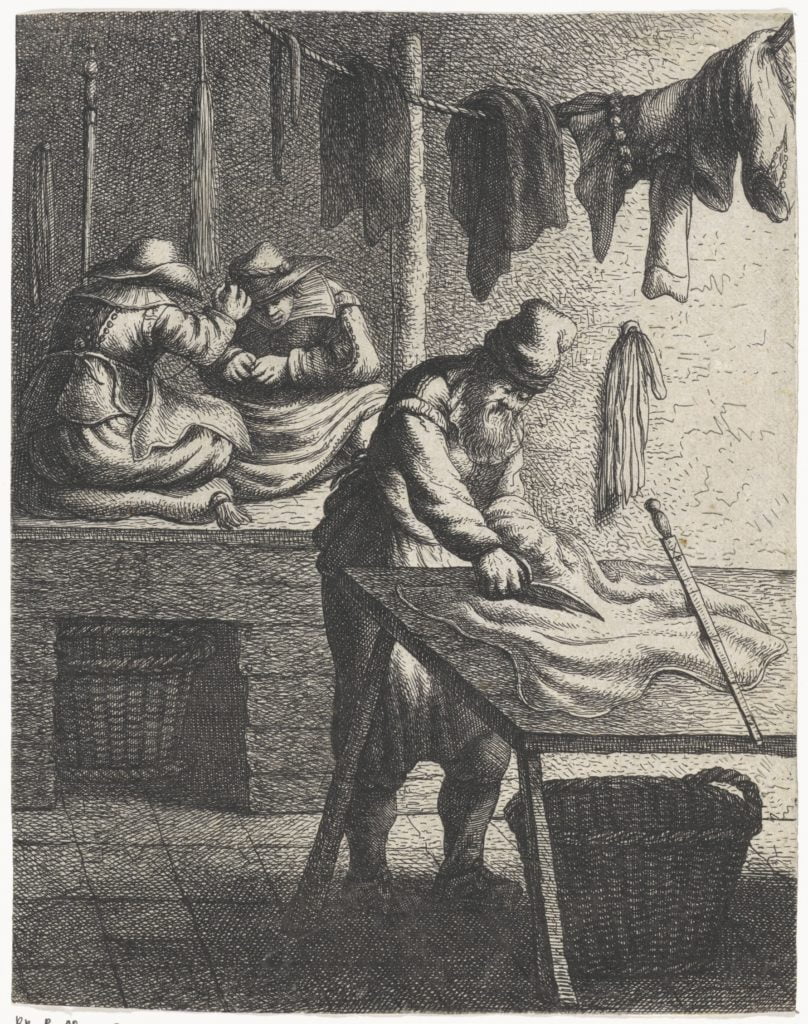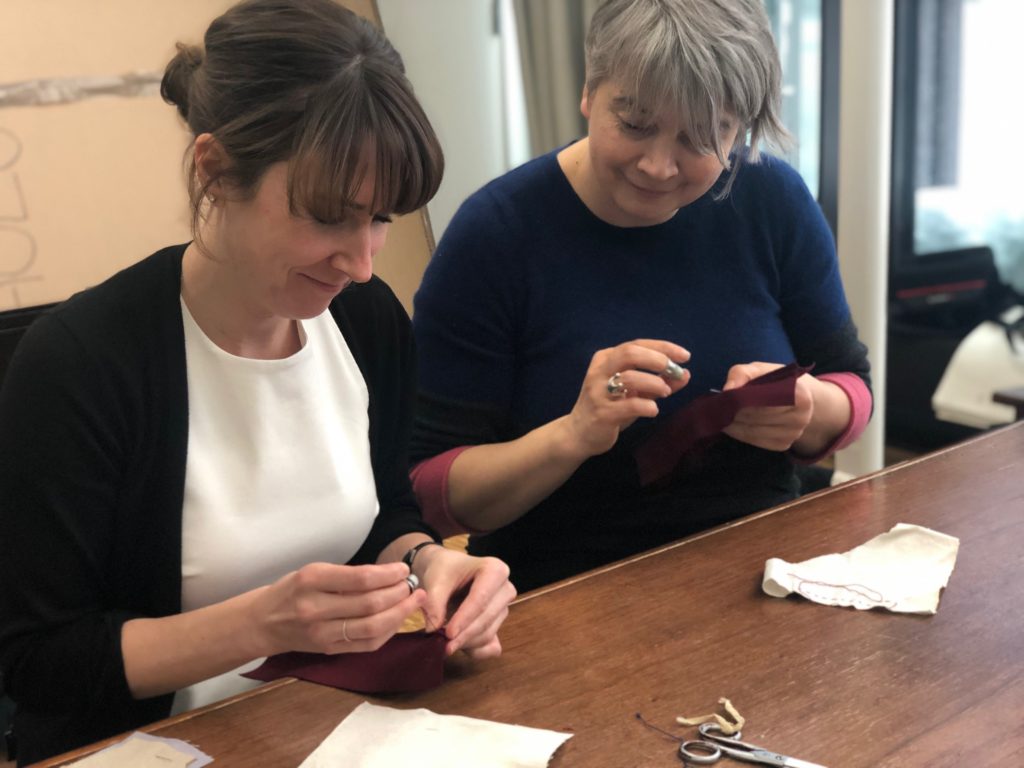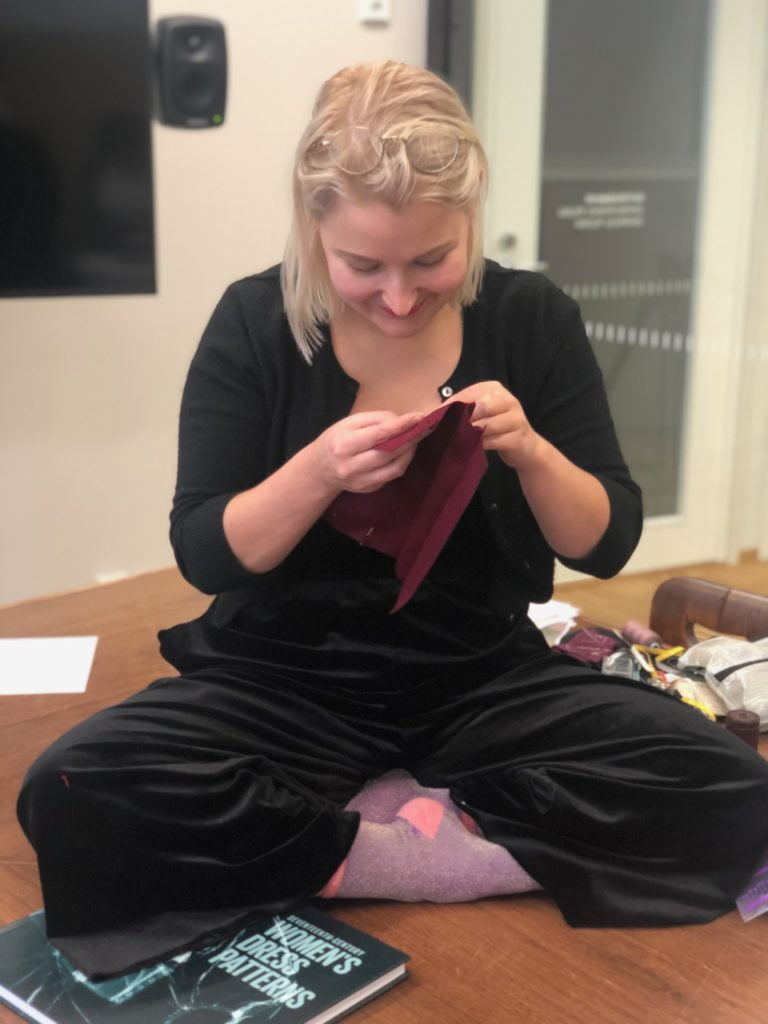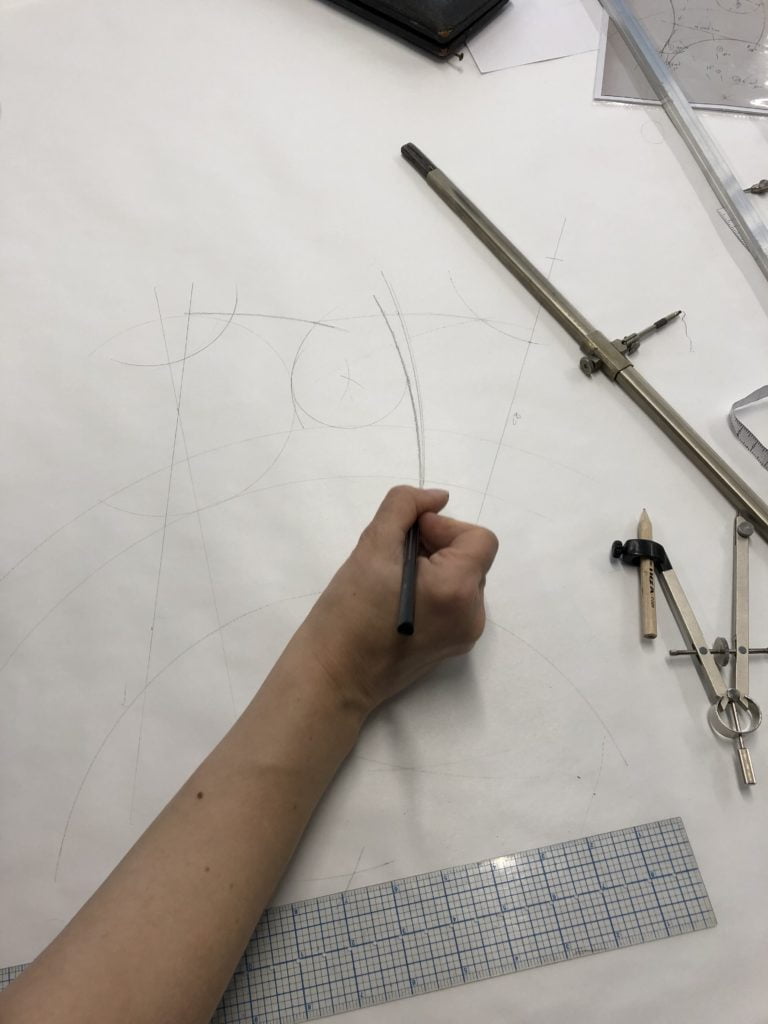Shoes, dyes, fabrics and lace – Refashioning the Renaissance workshop in Toronto and NYC
Following our series of four panels at the Renaissance Society of America in Toronto, the Refashioning the Renaissance team took the opportunity to explore the city, and then travelled across the border and to New York for a four-day research trip in order to discuss, experiment, and see early modern textiles with some American colleagues and collaborators.
Before we left Toronto, we were able to spend a few heavenly hours with curator Elizabeth Semmelhack in the Bata Shoe Museum’s stores, where we saw richly decorated Spanish and Italian platform chopines, medieval leather pointed shoes, porcupine-quill decorated moccasins, seventeenth-century English slap-soled heels, and even some more humble slashed leather shoes that might have been worn by the artisans we study at the Refashioning project. We were joined by Making and Knowing’s Principal Investigator Pamela Smith, with whom we had some stimulating discussions about the recent scholarly turn to object-based investigations, and also recorded a podcast (keep your eyes and ears peeled on the website for that).
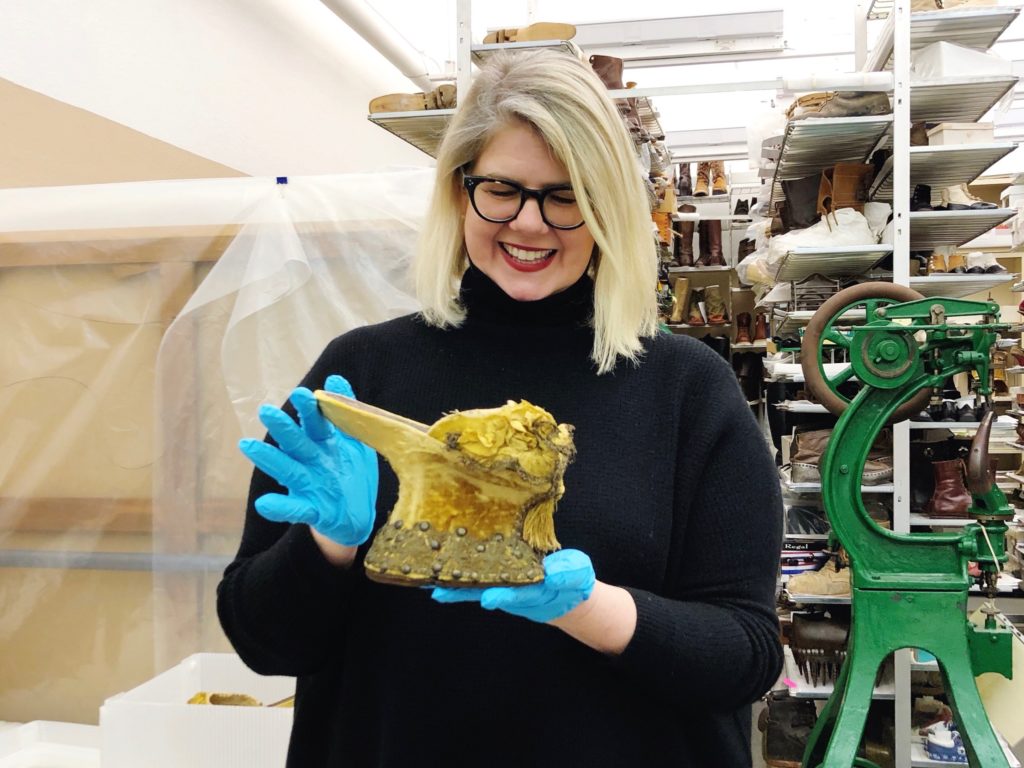
Elizabeth Semmelhack, curator of the Bata Shoe Museum, holds a velvet-covered chopine. Photo copyright Refashioning the Renaissance Project.
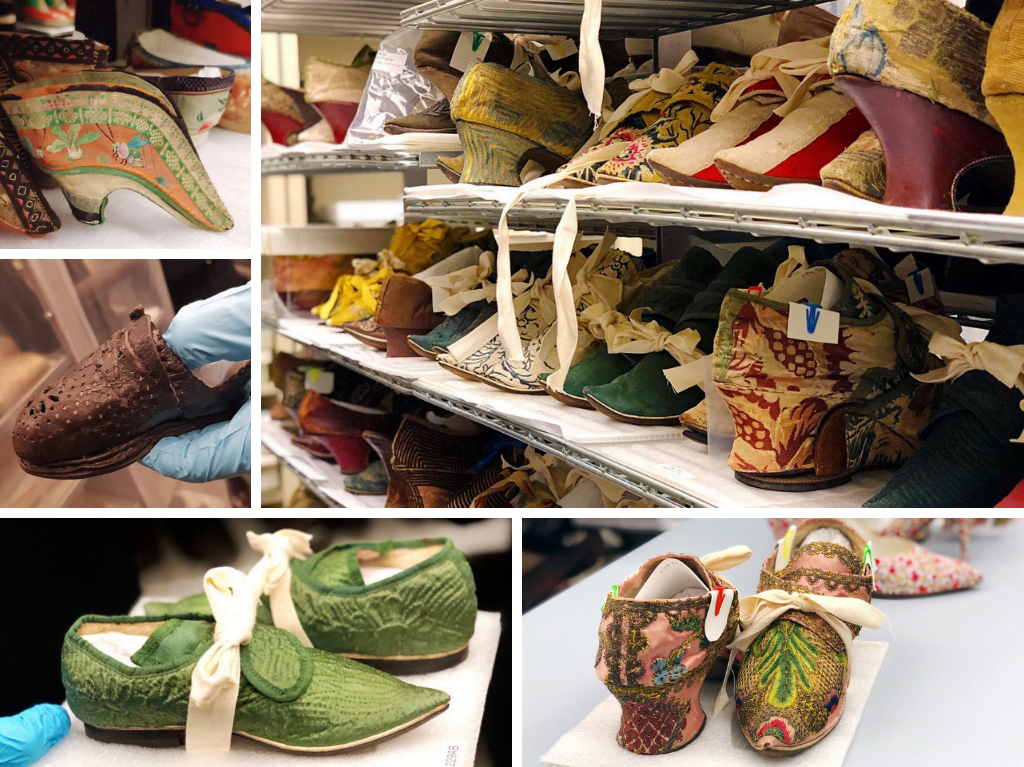
Photo copyright Refashioning the Renaissance Project.
Once in New York, we headed straight to the Metropolitan Museum of Art’s Textile Conservation department, where we were hosted by Cristina Carr, whose expertise with a microscope reveals the intricate skills and painterly effects that could be achieved by embroiderers, weavers and seamstresses in the early modern period (for more, see this interview with her by our colleagues at the Materialized Identities project). It was a joy to see the cutting-edge technology and patient skill of the conservators who work behind the scenes to care for some of the museum’s most delicate objects. We also visited the Ratti Center, where curator Elizabeth Cleland and her colleagues viewed a range of textiles and accessories that early modern artisans may have worn during the sixteenth and seventeenth centuries with us. Among these were stunning pieces of needle and bobbin lace from Italy and the Netherlands, woollen velvets, and linen aprons. Although the Met provides many high-resolution images on its website, nothing compares to being able to view these pieces in person, to see the lustre and colour of their dyestuffs and fibres, and to spend time with our curatorial and conservation colleagues discussing the techniques, materials, and context of these objects.
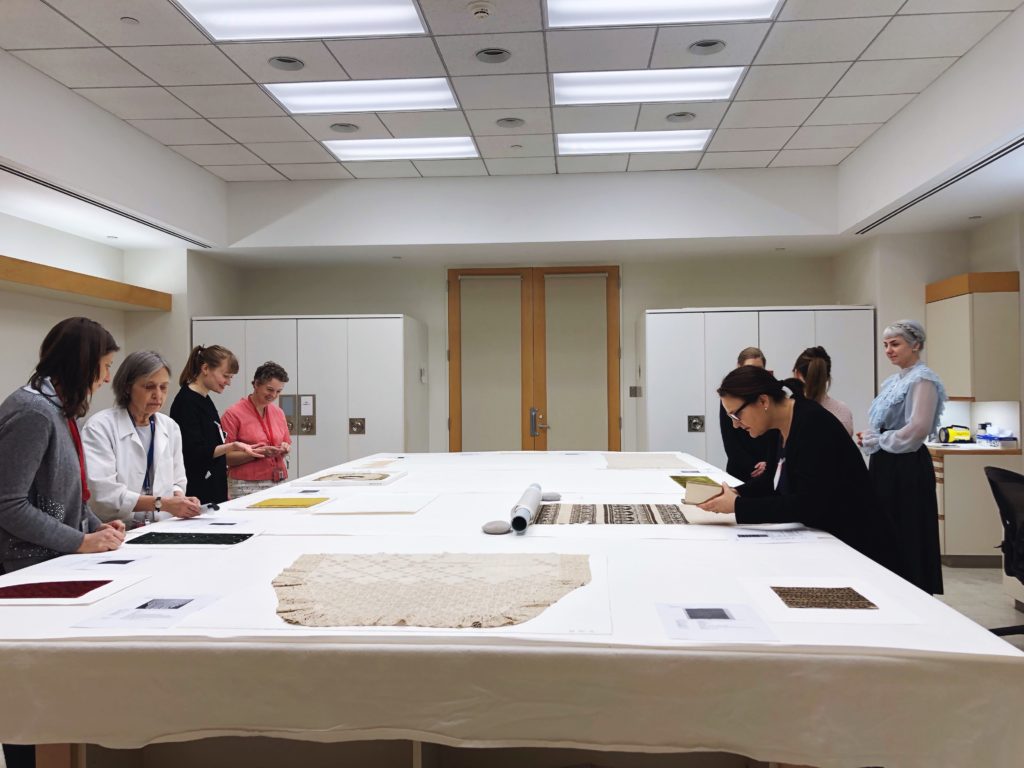
Viewing, discussing, and documenting the Met’s textile collections. Photo copyright Refashioning the Renaissance Project.
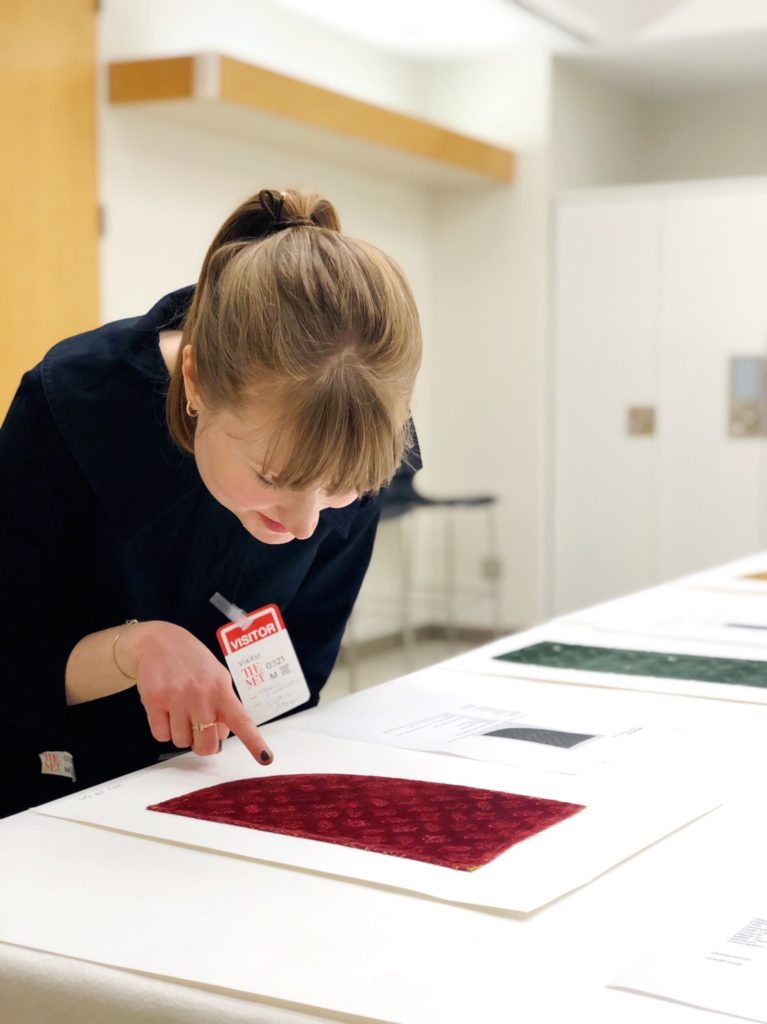
Sophie Pitman looks closely at some stamped velvet at the Ratti Center. Photo copyright Refashioning the Renaissance Project.
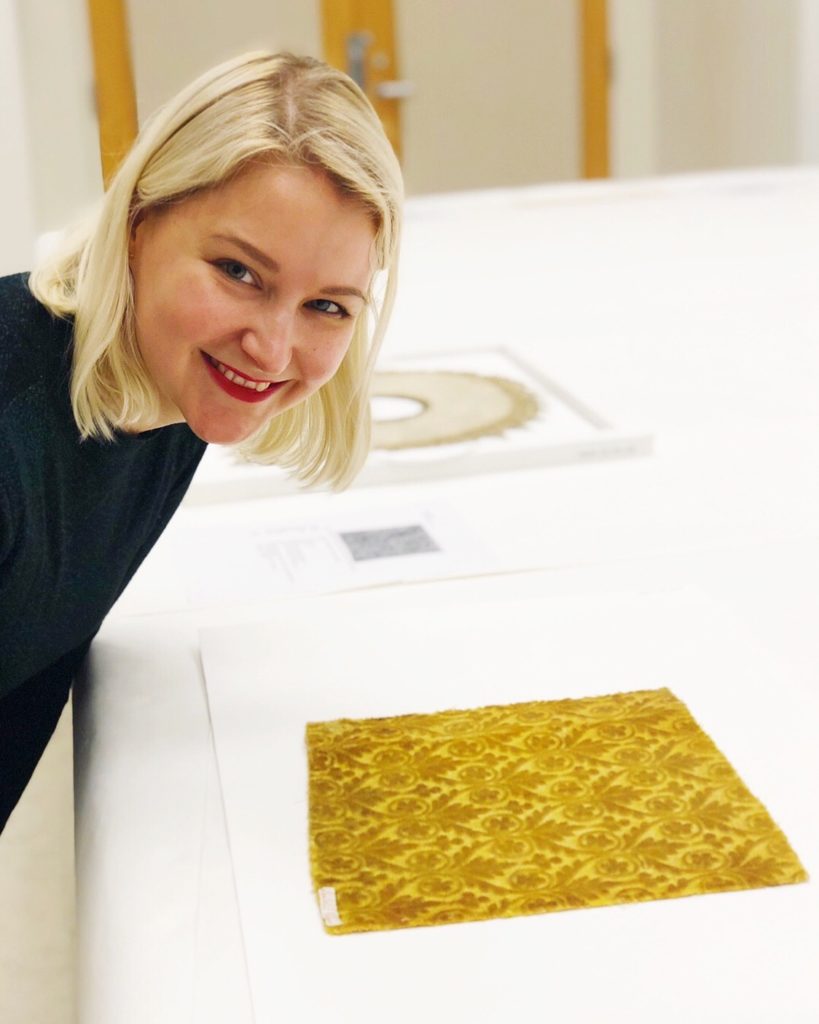
Piia Lempiäinen with a woollen velvet fragment. Photo copyright Refashioning the Renaissance Project.
I also had the chance to visit the Moroni exhibition at The Frick Collection, remarkable for how the curators have placed surviving brocades, fans, and jewellery next to portraits which depict men and women wearing very similar garments and accessories. Giving these objects a presence in the gallery space focuses the viewer not only on the individual but also their carefully chosen attire and accoutrements. Moroni’s enigmatic portrait of an anonymous tailor, well-loved by the Refashioning team, was on display alongside a beautiful pair of decorated iron scissors from France, placing the artisan’s tools and social status (the cutter was, and remains, the most important tailor in the workroom) centre stage.
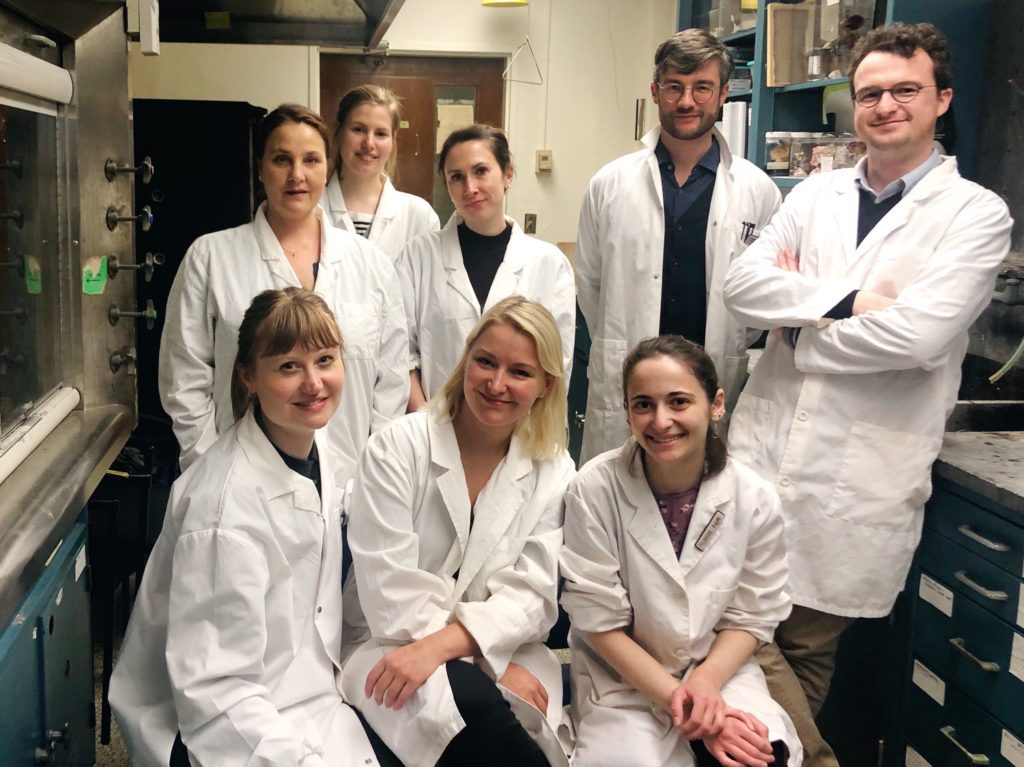
Members of the Making and Knowing and Refashioning the Renaissance Teams in the lab, Columbia University. Photo copyright Refashioning the Renaissance Project.
We spent a rich and exhausting day back at my former stomping ground, the Making and Knowing Lab at Columbia University, where project Manager Naomi Rosenkranz and I designed a day all about early modern red dyes. Bringing together the Making and Knowing and Refashioning the Renaissance teams to dye kermes, cochineal, and madder on wool, silk, and linen was a wonderful way to not just discuss reconstruction in theory but to actually make and experiment together. Our experiment focus was prompted by the need for some naturally dyed textiles for the upcoming ‘Dirty Laundry’ workshop, so stay tuned to the website to see how we stained these beautiful swatches with oil, wine and iron gall ink (using the ink made for us by Naomi!). We also had time to discuss the challenges and practicalities of materials sourcing, notetaking, safety issues and planning, and toasted past and future collaborations over an Aperol Spritz in Morningside Heights.

Paula Hohti grinds kermes lice to make red dye (left) and textile being removed from dye bath (right). Photo copyright Refashioning the Renaissance Project.
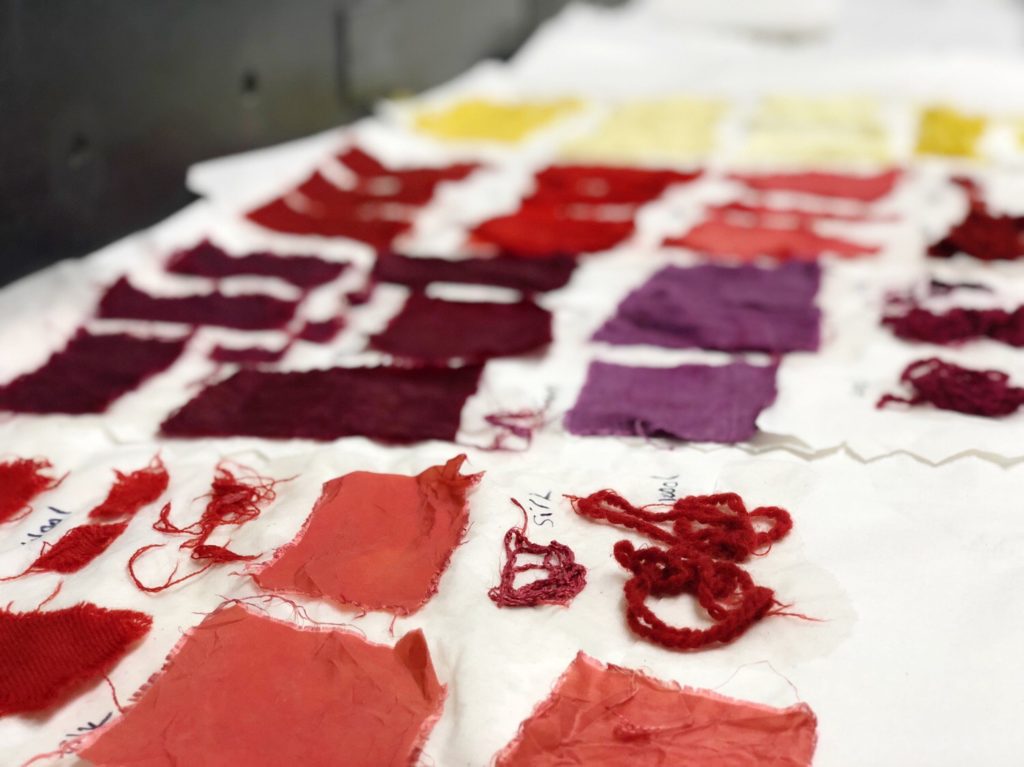
Madder, Cochineal, Kermes and Weld dyed textiles drying in the Making and Knowing Lab. Photo copyright Refashioning the Renaissance Project.
Our final workshop day was spent at the Textile Arts Center learning to make bobbin lace with Elena Kanagy-Loux, who has travelled around Europe learning regional styles and techniques directly from lacemakers. At first, the simple gestures and satisfying click-clack of the bobbins convinced us that we might all be making yards of lace in no time, but as the patterns became more complicated, we recognised the high levels of skill, patience, and innovation employed by early modern lacemakers. Elena discussed the 1559 Venetian pattern book Le Pompe with us, explaining how lacemakers might interpret the patterns differently depending on their regional and personal techniques, and taught us how we might learn to read and make some of the patterns ourselves, with a little more time and determination. After all, in the words of Frank Sinatra, if we can make it here, we can make it anywhere.
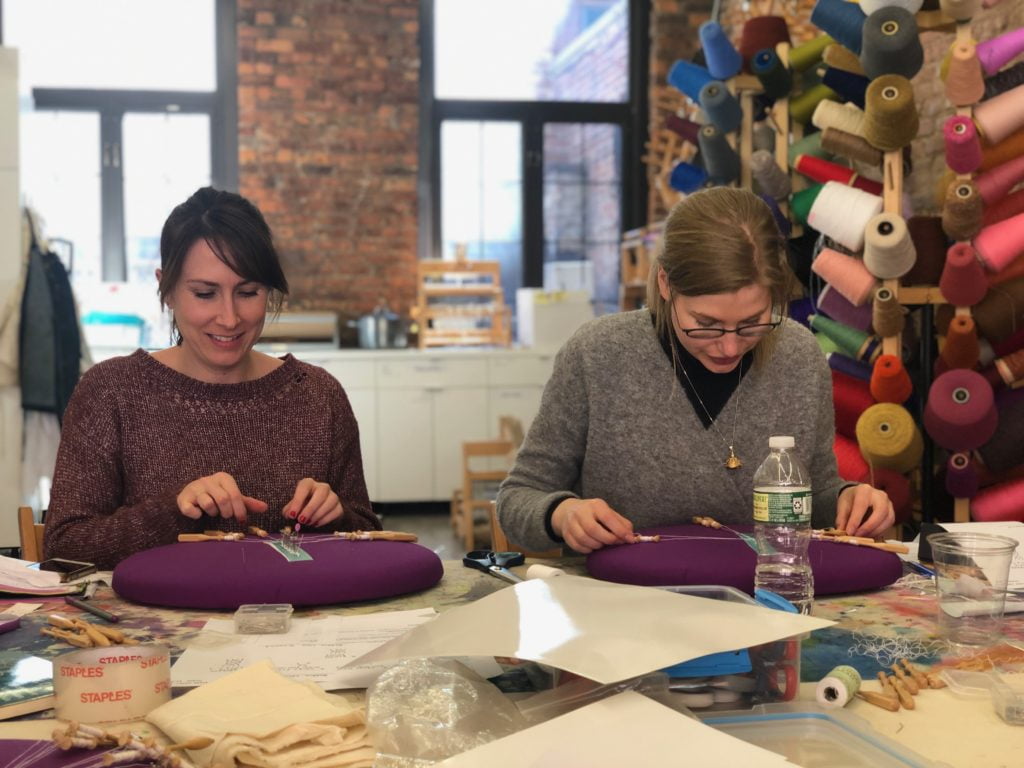
Michele Robinson and Anne-Kristine Sinvald Larsen making bobbin lace. Below Sophie Pitman demonstrates some bobbin lace techniques. Photo and video copyright Refashioning the Renaissance Project.


